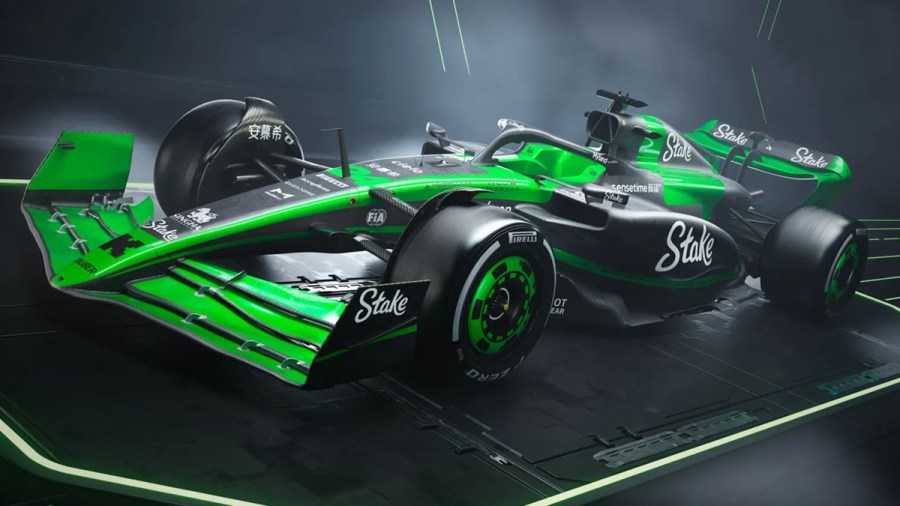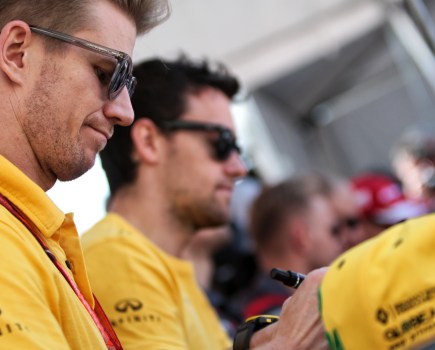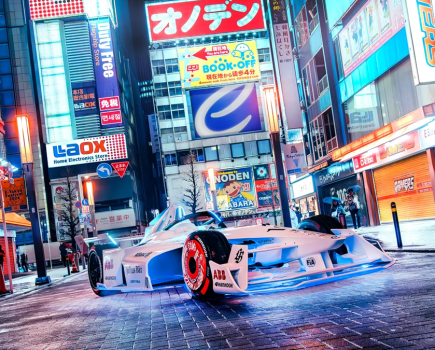The newly-renamed Stake F1 Team launched its new identity – and new car – last night. Here are the first impressions of the Sauber C44.
Given the state of this team’s performance as ‘Alfa Romeo’ last term, it would be easy to overlook the Sauber C44, writing it off as another inevitable backmarker of the 2024 Formula One season. However, once you start to dig deeper into the design and personnel underpinning it, the car actually has quite an interesting story to tell – beyond the lairy new color scheme. So, stick around and I’ll tell you exactly why Sauber… sorry, Stake… shouldn’t be as anonymous as they were in 2023.
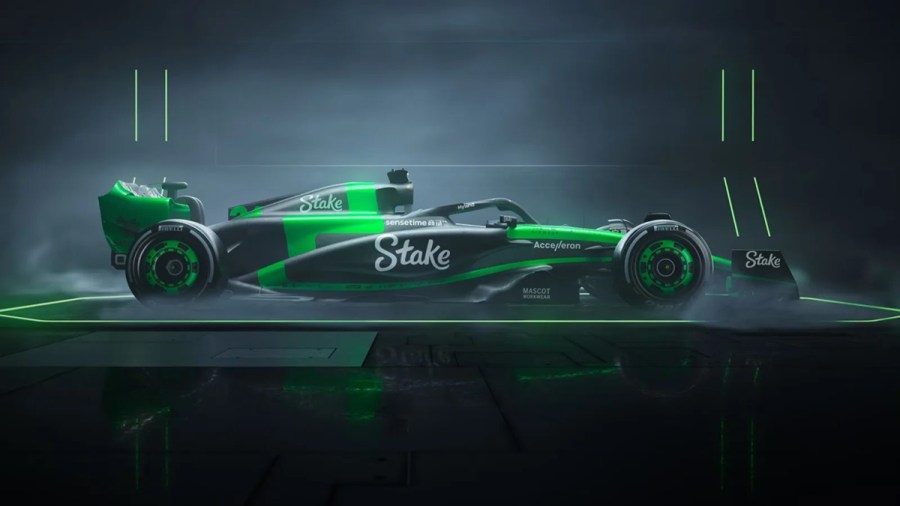
The new Stake F1 team identity
Before we get into the actual engineering details, it’s worth covering the most eye-catching part of the Sauber C44 – its livery. As is the case with all of the 2024 F1 liveries revealed so far, the theme is very much “have a bare carbon base, then add a splash of accent color.” However, instead of McLaren’s papaya, or Williams’ blue, fluorescent green is the color which will represent Stake. And frankly, I’m all for it. Amidst an increasingly dark and gloomy grid, any source of bright color is welcomed, and it’s fair to say that you won’t fail to spot these on TV. Plus, given the fluorescence, I imagine the car will look particularly good under the lights during F1’s series of night races.
Increased fan focus
If you’re unaware as to why Sauber is now calling itself Stake, go back and check out this article to get up to speed with what Stake is, why it’s controversial, and what role Audi has in the background. Anyway, one of the major points reiterated during the launch show was that Stake wants to elevate the way it interacts with fans. That was apparent in the new graphic style used during the presentation, as well as the easily identifiable bold color scheme. Plus, with the amiable and often butt-naked Valterri Bottas, plus fashion-savvy Zhou Guanyu hired to sit behind the wheel, Stake has a pair of drivers which it can certainly lean on to elevate the team’s new personality and social media presence.
From the outside, it looks as though they’ve peered over at McLaren’s highly successful identity overhaul and decided that they wanted a slice of that pie. Good luck to them, but for any of this to have any sort of meaningful impact, the car needs to be quick enough to get the team’s drivers and its ‘new identity’ into the spotlight in the first place. So, are there any early signs of promise?
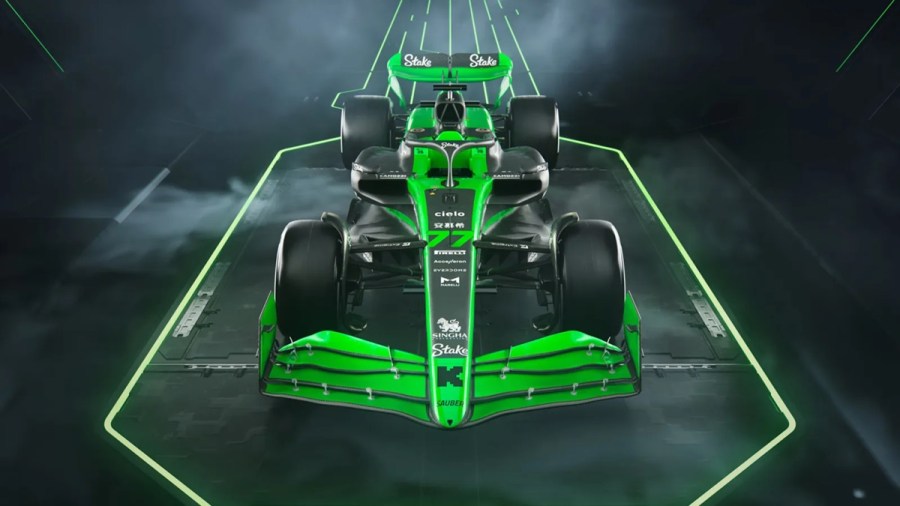
Reasons to be optimistic
Now for the nerdy bit. Let’s talk aero. During the car’s launch, words like “aggressive” and “brave” were thrown around when describing the team’s approach to its new car concept. But what does that actually mean?
Often, a lot of attention gets paid to the front wing of an F1 car, but not so much during launch season given that the final version is almost always kept secret until pre-season testing begins. Instead, the Sauber C44’s sidepods are one of the biggest obvious changes made to the car from an aero perspective. In particular, the design of the pods’ intakes has been revised to better aid the flow of air. New channels on top of the sidepods then give the air that doesn’t enter the intake a less resistant path around the car. Plus, the sidepods themselves are more compact than they were last year.
Elsewhere, whereas last year Sauber ran pushrod suspension at both ends of the car, it’s now opted for a pullrod design at the front, emulating the concept used by Red Bull and McLaren. Now, you might think that suspension changes would come as a result of wanting to recuperate some sort of mechanical deficit in the car’s handling, but actually Sauber technical director James Key states that it has happened for aero reasons. To learn more about the intricacies of the Sauber C44’s aero concept in its launch specification, watch this video.
What secrets are Stake hiding?
It’s also worth noting that, as with every F1 team’s season launch these days, there is an element of smoke and mirrors at play. When the Stake F1 team arrives in Bahrain for pre-season testing, the car will already have evolved and added further aero features on top of what we see now. Key has admitted exactly that.
So, although there’s certainly a lot of uncertainty about the car, it’s positive to know that Sauber’s engineering team is in a well-funded, creative place now, rather than the stagnant one that it had become in recent years.

What does the future hold?
By now, it’s well-known that Sauber/Stake will become the Audi factory F1 team in 2026, but in the shorter term, there’s still notable plots to keep track of. The first one is the team’s recruitment drive. In the engineering departments, Andreas Seidl and James Key are already in place, having previously served their time at McLaren during the first stage of the ‘papaya revolution’. Seidl in particular is a big coup for the team to have secured, and there’s no indication that the recruitment drive on the engineering side of things is over.
Expect more talent to join the Sauber project in the months and years to come. In fact, it’s not just engineers that are likely to be coming through the door. Lewis Hamilton’s shock move to Ferrari has left Carlos Sainz Jr jobless for 2025. As things stand, Stake is the Spaniard’s most likely destination, given the draw of an Audi factory drive (and pay cheque) in 2026. Having another proven Grand Prix winner in its ranks would be a further necessary step for the team on its path to factory status.
To be successful in F1 though, it’s not just about the people you have at your disposal, but the equipment that they have to work with. Fortunately, the team’s newfound investment hasn’t overlooked that, and a raft of updates and upgrades to the teams wind tunnel should certainly help matters. Expect more frequent, higher quality car upgrades throughout the year as a result.
Anyway, those are my first impressions of the Sauber C44 and the state of the Stake F1 team. Let’s see how this early-year optimism translates into reality once the racing begins.

